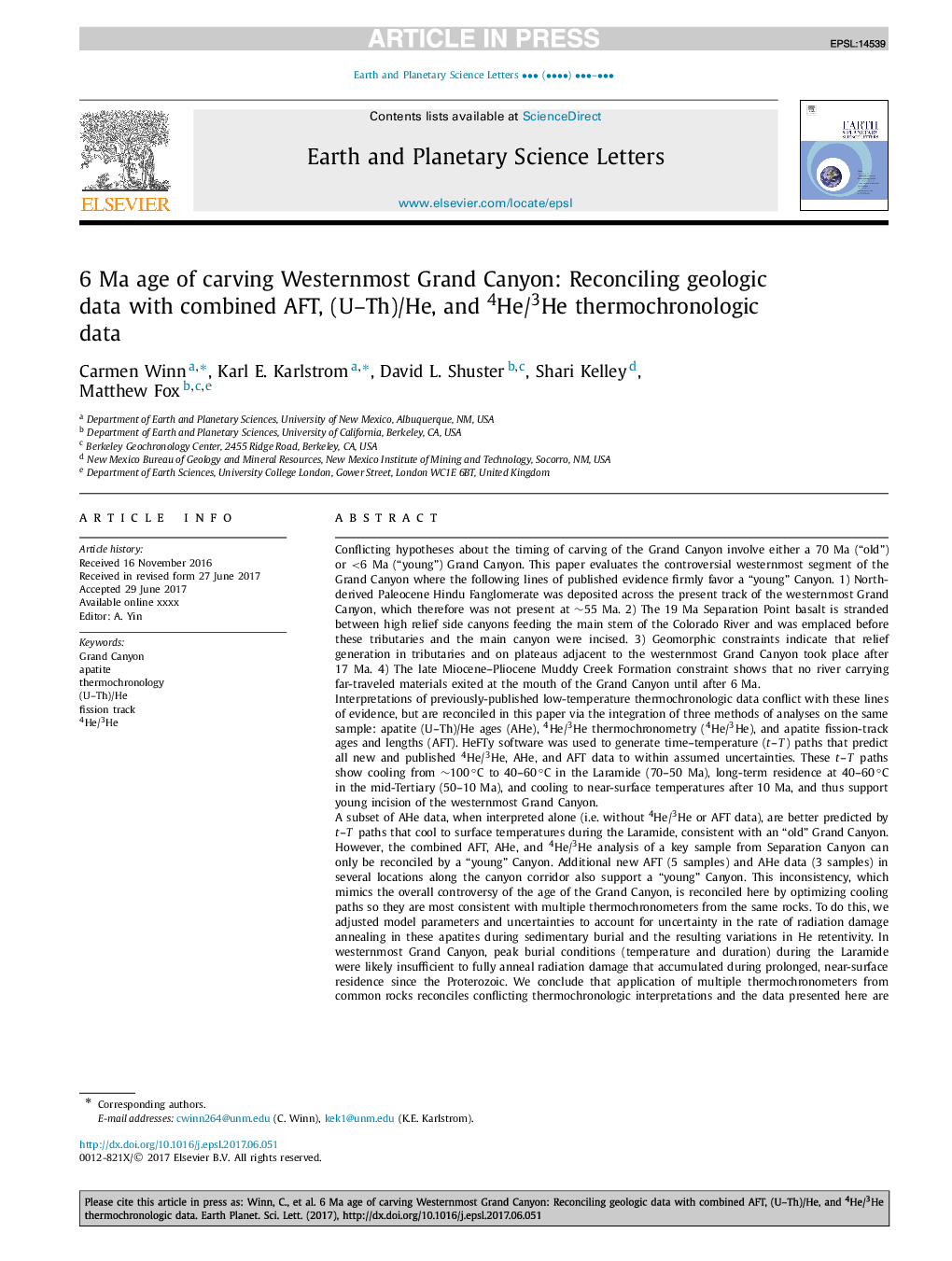| Article ID | Journal | Published Year | Pages | File Type |
|---|---|---|---|---|
| 5779762 | Earth and Planetary Science Letters | 2017 | 15 Pages |
Abstract
A subset of AHe data, when interpreted alone (i.e. without 4He/3He or AFT data), are better predicted by t-T paths that cool to surface temperatures during the Laramide, consistent with an “old” Grand Canyon. However, the combined AFT, AHe, and 4He/3He analysis of a key sample from Separation Canyon can only be reconciled by a “young” Canyon. Additional new AFT (5 samples) and AHe data (3 samples) in several locations along the canyon corridor also support a “young” Canyon. This inconsistency, which mimics the overall controversy of the age of the Grand Canyon, is reconciled here by optimizing cooling paths so they are most consistent with multiple thermochronometers from the same rocks. To do this, we adjusted model parameters and uncertainties to account for uncertainty in the rate of radiation damage annealing in these apatites during sedimentary burial and the resulting variations in He retentivity. In westernmost Grand Canyon, peak burial conditions (temperature and duration) during the Laramide were likely insufficient to fully anneal radiation damage that accumulated during prolonged, near-surface residence since the Proterozoic. We conclude that application of multiple thermochronometers from common rocks reconciles conflicting thermochronologic interpretations and the data presented here are best explained by a “young” westernmost Grand Canyon. Samples spread along the river corridor also suggest the possibility of variable mid-Tertiary thermal histories beneath north-retreating cliffs.
Related Topics
Physical Sciences and Engineering
Earth and Planetary Sciences
Earth and Planetary Sciences (General)
Authors
Carmen Winn, Karl E. Karlstrom, David L. Shuster, Shari Kelley, Matthew Fox,
